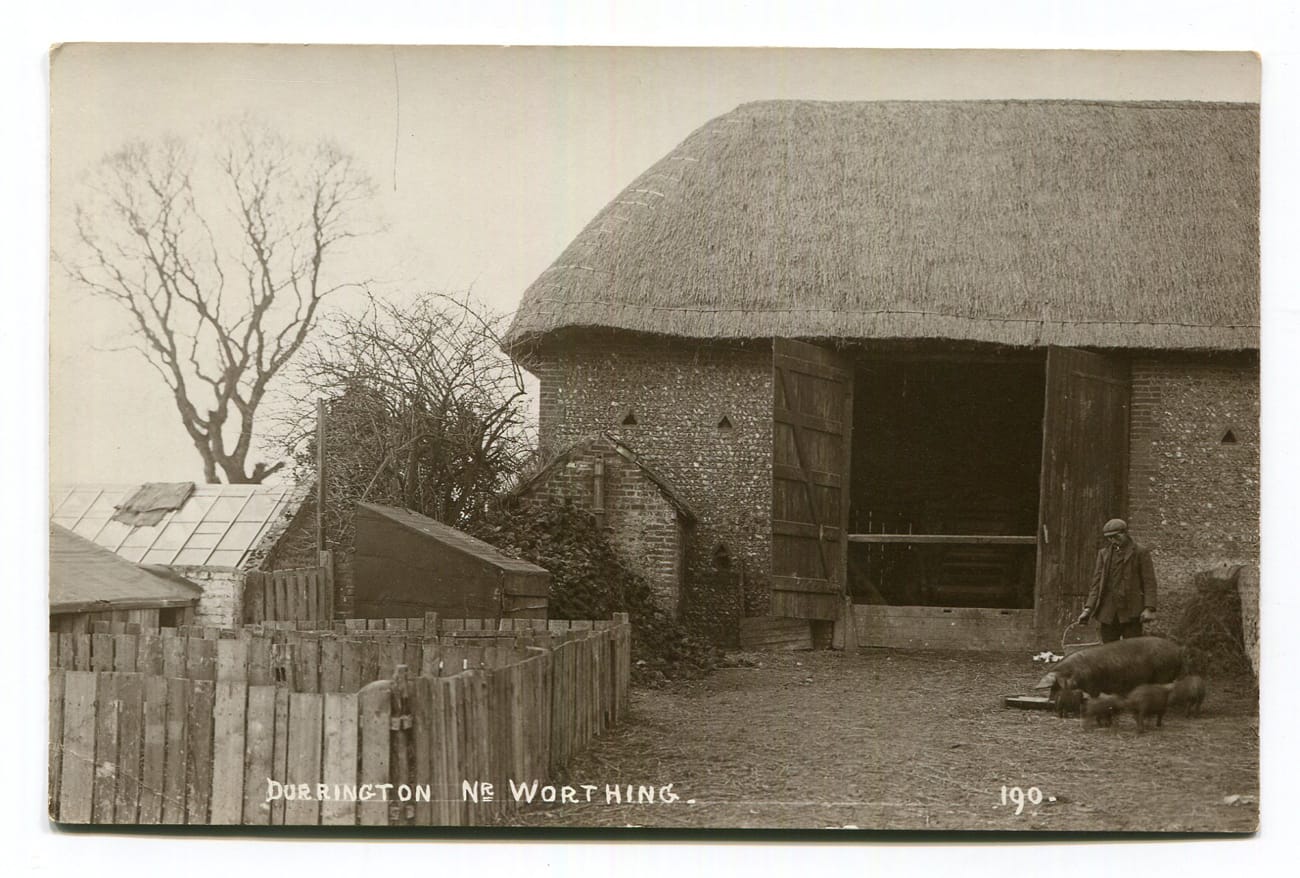The name “Durrington” denotes two distinct English villages, each possessing a unique character and history. One, nestled in Wiltshire near Stonehenge, is steeped in ancient history; the other, a vibrant coastal community in West Sussex, thrives as a modern residential area. This article explores both, highlighting their contrasting identities and the factors shaping their unique appeal.
Durrington, Wiltshire: A Journey Through Time
Durrington, Wiltshire, stands as a remarkable testament to millennia of human history. Its landscape, part of the Salisbury Plain, holds the remnants of a civilization that flourished thousands of years ago. Here, the monumental structures of Durrington Walls and Woodhenge offer captivating glimpses into the Neolithic period.
Durrington Walls and Woodhenge: A Neolithic Metropolis
Durrington Walls, the second-largest henge in the UK, is a truly awe-inspiring sight. Archaeological evidence suggests it was a significant settlement, possibly even larger than Stonehenge, serving as a center for large-scale feasts, communal activities, and possibly religious ceremonies. Its proximity to Stonehenge suggests a strong connection, the nature of which is still debated by experts. Some believe it served as a residential area for those involved in Stonehenge’s construction or rituals, perhaps a sort of Neolithic “suburb”. Ongoing excavations continually uncover new artifacts and evidence, refining our understanding of this fascinating community and its practices. Recent discoveries may even reshape our current theories about the social organization and daily life during that era.
Woodhenge, a nearby circle of wooden posts, adds another layer of intrigue. While less well-preserved than Durrington Walls, its presence suggests a continuation or expansion of the ritualistic and ceremonial activity associated with the larger henge. The precise purpose of Woodhenge remains a subject of ongoing research and scholarly discussion; some experts believe it had astronomical significance, possibly linked to the solar calendar.
The sheer scale and complexity of these structures indicate a surprisingly organized and sophisticated society, capable of mobilizing significant manpower and resources for their construction. The artifacts uncovered—pottery shards, tools, and animal bones—provide valuable insights into the daily lives and beliefs of these Neolithic inhabitants. Ongoing research, employing advanced technologies, continues to uncover new information, allowing for a more nuanced understanding of this ancient civilization.
From Ancient Settlement to Medieval Manor: A Shifting Landscape
Durrington’s history extends far beyond the Neolithic period. Following the decline of the massive henge, the landscape shifted, and the village’s narrative continued through the medieval period, becoming part of the Amesbury Royal Estate. Historical records trace the land’s ownership through various royal families and noble houses. It’s fascinating to consider the juxtaposition of this medieval history with this pre-historic center now lying beneath the agricultural landscape. These documents provide an important record of how its community evolved, including the social and economic forces that shaped its development.
Durrington Today: A Blend of Past and Present
Modern Durrington, Wiltshire presents a unique blend of ancient legacy and contemporary life. The village maintains its connection to its rich past, with ongoing archaeological work at Durrington Walls and Woodhenge. The sites continue to fascinate researchers and visitors, attracting tourists and contributing to the region’s economy. This juxtaposition of ancient history with present-day village life creates a truly special atmosphere—a remarkable place where history buffs and residents alike appreciate the unique charm and legacy of the village.
Durrington, West Sussex: A Coastal Community
In contrast to its Wiltshire namesake, Durrington, West Sussex, offers a distinctly modern experience. Located near the seaside town of Worthing, this Durrington is part of a thriving residential area characterized by coastal living and a strong sense of community.
A Coastal Lifestyle and Community Spirit
This Durrington’s identity is shaped by its location. The salty sea air, easy access to beaches and parks, and proximity to the amenities of Worthing town center define its character. The annual Durrington Festival showcases local talent and community spirit, illustrating the vibrant atmosphere prevalent in this seaside community.
The demographic profile here likely differs significantly from that of its Wiltshire counterpart, with a potentially younger and more diverse population, reflecting the evolution of this area over time. Housing in the area is likely diverse, ranging from traditional houses to newer developments, all contributing to its dynamic ambiance.
Comparing the Two Durringtons: A Tale of Two Villages
The contrast between the two Durringtons is striking:
| Feature | Durrington, Wiltshire | Durrington, West Sussex |
|---|---|---|
| Primary Focus | Neolithic History & Archaeology | Modern Community, Coastal Living |
| Main Attraction | Durrington Walls, Woodhenge | Durrington Festival, Proximity to Worthing |
| Population | Relatively small (check local council data) | Part of larger Worthing population |
| Governance | Wiltshire Council | Worthing Borough Council |
| Surrounding Area | Salisbury Plain, Stonehenge | Coastal Area, Worthing |
While sharing a name, these villages offer distinct experiences. Durrington, Wiltshire, invites exploration of prehistory, while Durrington, West Sussex, provides a taste of modern coastal life. Both nevertheless stand as examples of rich communities and unique facets of English village life.
Is Durrington a Town? Unraveling the Wiltshire Village’s Identity
The question of whether Durrington, Wiltshire is a town or village is complex. While officially a civil parish, its size, amenities, and historical significance add nuances to this classification.
Town vs. Village: A Matter of Perspective
There’s no precise legal definition distinguishing towns from villages in England. The distinction is often blurred, depending on factors such as population, amenities, governance, and local perception. Durrington’s case presents such ambiguity.
Durrington’s Attributes: A Blend of Village and Small Town
Durrington boasts a range of local amenities: shops, schools, and community centers. However, comparing it to Amesbury, a nearby larger town, reveals differences in scale and range of services. Its population, while larger than many villages, remains smaller than most towns, adding to the ambiguity. Its governance as a civil parish, while important, doesn’t decisively settle the matter. The presence of nearby military bases has likely influenced its population growth and economic landscape, but this influence, too, doesn’t neatly categorise it as a “town.”
Historical Significance: A Defining Factor?
Durrington’s rich history, most prominently its Neolithic past, significantly shapes its identity. The international recognition of Durrington Walls and Woodhenge attracts tourists, possibly elevating its status beyond a simple village. This historical weight, and the ongoing archaeological research, contributes to a unique character that sets it apart from purely modern settlements.
Local Perspectives: A Crucial Element
Understanding Durrington’s identity requires understanding the local perspective. [Insert quotes from Durrington residents, if available, on how they perceive their village/town]. This insight is crucial in understanding community self-identification.
Conclusion: A Village with Town-like Attributes
Durrington, Wiltshire presents a blend of characteristics typically associated with both villages and small towns. The question of classification remains a matter of perspective, making it ultimately, a unique, hybrid community. Its identity is best understood by appreciating its mix of ancient history, modern infrastructure, and the ongoing evolution of its community spirit.
- Unlock 6000+ words beginning with he: A comprehensive analysis - April 20, 2025
- Mastering -al Words: A Complete Guide - April 20, 2025
- Master Scrabble: High-Scoring BAR Words Now - April 20, 2025

















1 thought on “Durrington England: Unveiling the History and Charm of Two Unique Villages”
Comments are closed.